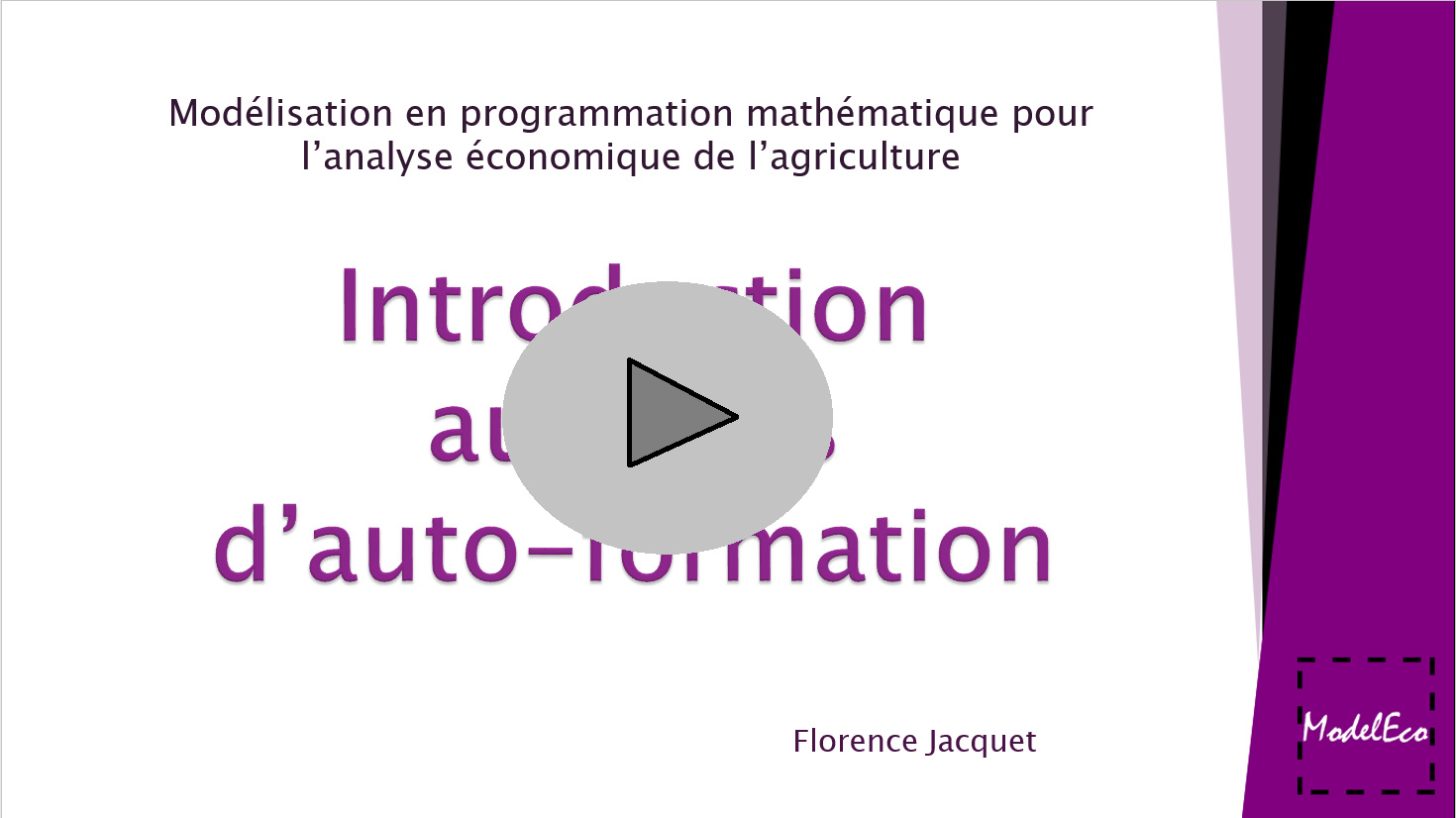The course is divided into 3 sequences :
| Sequence | Description |
| 1 – Introduction to mathematical programming using GAMS | The first sequence includes the basics of mathematical programming and an introduction to GAMS. Based on a simple model of a cereal farm that grows wheat and maize, a mathematical programming model is developed, first of all in algebraic form represented graphically, and then using GAMS. This first model introduces the basic elements of GAMS for model construction. The sequence ends with a short presentation of dual values and their use. |
| Components of GAMS language : model structure, .lst, display, .up, .lo, .m, and GDX (import and export of data in Excel) files | |
| 2 – Farm modelling | Throughout this second sequence the basic model is extended with the introduction of production techniques, of constraints per period, and of the possibility of access for production factors. The introduction of multi-periodic decisions into annual models such as rotations, livestock or accounts must then be considered. These enriched models eventually make it possible to carry out simulations of environmental public policies. |
| Components of GAMS language : two-dimensional variables, three-dimensional tables, LOOP, subsets, binary variables | |
| 3 – Risks and time factors in models | The third sequence is divided into two parts. The first one deals with risk and begins with a reminder of risk in agriculture, and various methods are highlighted : Safety-First, variance-standard deviation approach, Chance Constrained Model, Target-MOTAD and utility function. In the second part, which deals with time in the models, dynamic models are presented, two of which are in more detail : recursive models and multi-periodic models. |
| Components of GAMS language : NLP, exponential function, square root, cardinal, $ condition, exponent |

